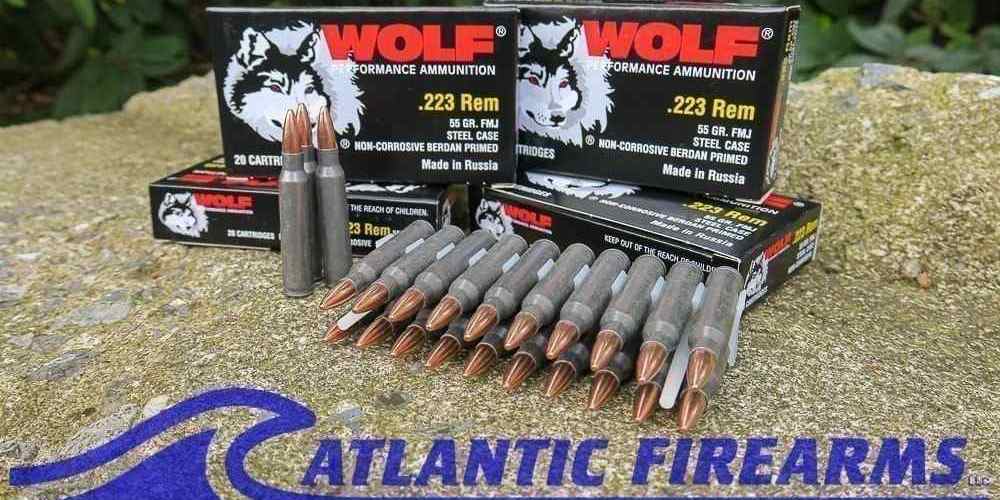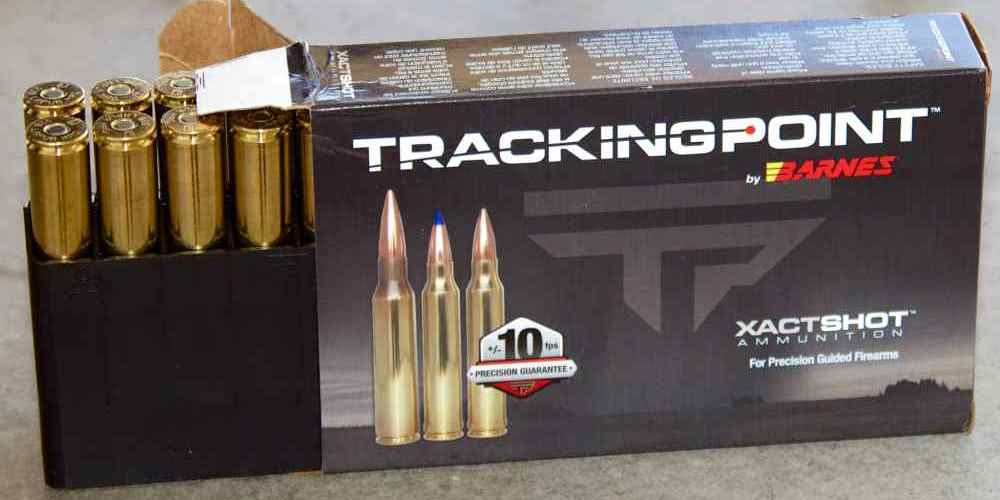“Barrel rifling: the key to precision in AR15 accuracy.”
Benefits of Barrel Rifling for AR15 Ammo Accuracy
Barrel rifling is a crucial aspect of firearm design that greatly impacts the accuracy and performance of a weapon. When it comes to AR15 rifles, barrel rifling plays a significant role in determining the accuracy of the ammunition fired from the weapon. But how exactly does barrel rifling affect AR15 ammo accuracy?
To understand the impact of barrel rifling on AR15 ammo accuracy, it is important to first understand what barrel rifling is. Barrel rifling refers to the spiral grooves cut into the inner surface of a firearm barrel. These grooves cause the bullet to spin as it travels down the barrel, which stabilizes the projectile in flight and improves accuracy.
One of the key benefits of barrel rifling for AR15 ammo accuracy is improved stability and precision. The rifling in the barrel imparts a spin to the bullet, which helps to stabilize it in flight and reduce the effects of factors such as wind resistance and gravity. This results in more accurate and consistent shots, especially at longer distances.
In addition to improved stability, barrel rifling also helps to increase the velocity and energy of the bullet. The spin imparted by the rifling helps to propel the bullet forward with greater force, resulting in higher muzzle velocity and energy. This can lead to improved terminal ballistics and overall performance of the ammunition.
Another benefit of barrel rifling for AR15 ammo accuracy is the reduction of barrel wear and fouling. The spiral grooves in the barrel help to evenly distribute the pressure of the expanding gases generated by the firing of the ammunition. This reduces the wear and tear on the barrel and helps to prevent fouling, which can negatively impact accuracy over time.
Furthermore, barrel rifling can also affect the type of ammunition that can be used in an AR15 rifle. Different types of rifling, such as traditional rifling or polygonal rifling, can have varying effects on the performance of different types of ammunition. It is important to consider the type of rifling in a barrel when selecting ammunition for an AR15 rifle to ensure optimal performance and accuracy.
Overall, barrel rifling plays a crucial role in determining the accuracy and performance of AR15 ammunition. The spiral grooves in the barrel help to stabilize the bullet in flight, increase velocity and energy, reduce barrel wear and fouling, and impact the type of ammunition that can be used. By understanding the impact of barrel rifling on AR15 ammo accuracy, shooters can make informed decisions when selecting ammunition for their rifles.
In conclusion, barrel rifling is a key factor in determining the accuracy and performance of AR15 ammunition. The spiral grooves in the barrel help to stabilize the bullet in flight, increase velocity and energy, reduce barrel wear and fouling, and impact the type of ammunition that can be used. Shooters should consider the type of rifling in a barrel when selecting ammunition for their AR15 rifles to ensure optimal performance and accuracy.

Factors Influencing AR15 Ammo Accuracy with Barrel Rifling
When it comes to AR15 rifles, accuracy is a key factor that shooters are always looking to improve. One of the factors that can influence the accuracy of AR15 ammo is barrel rifling. Barrel rifling refers to the grooves cut into the inside of the barrel that help stabilize the bullet as it travels down the barrel. The rifling causes the bullet to spin, which helps it fly straighter and more accurately towards the target.
The type of rifling in a barrel can have a significant impact on the accuracy of AR15 ammo. There are two main types of rifling commonly used in AR15 barrels: traditional rifling and polygonal rifling. Traditional rifling consists of grooves cut into the barrel in a spiral pattern, while polygonal rifling has a more rounded shape with fewer sharp edges.
Traditional rifling is the most common type of rifling found in AR15 barrels. It has been used for centuries and is known for its reliability and consistency. The grooves in traditional rifling help grip the bullet and spin it as it travels down the barrel, resulting in improved accuracy. However, traditional rifling can also cause more friction on the bullet, which can affect the velocity and trajectory of the bullet.
On the other hand, polygonal rifling is a newer technology that is becoming increasingly popular in AR15 barrels. Polygonal rifling has a smoother surface compared to traditional rifling, which reduces friction on the bullet as it travels down the barrel. This can result in higher velocities and better accuracy for AR15 ammo. Additionally, polygonal rifling is known for its ability to reduce fouling and make cleaning the barrel easier.
While both traditional rifling and polygonal rifling have their own advantages, the type of rifling that will work best for you ultimately depends on your shooting preferences and needs. Some shooters may prefer the reliability and consistency of traditional rifling, while others may opt for the improved velocity and accuracy of polygonal rifling.
It’s important to note that barrel rifling is just one of many factors that can influence the accuracy of AR15 ammo. Other factors such as bullet weight, bullet design, and barrel length can also play a role in determining how accurately your AR15 rifle shoots. Experimenting with different types of ammo and barrel configurations can help you find the combination that works best for your shooting style.
In conclusion, barrel rifling can have a significant impact on the accuracy of AR15 ammo. Traditional rifling and polygonal rifling each have their own advantages and disadvantages, so it’s important to consider your shooting preferences and needs when choosing the type of rifling for your AR15 barrel. Ultimately, finding the right combination of factors that work best for you will help you achieve the accuracy you desire with your AR15 rifle.
Comparison of Rifling Types for AR15 Ammo Accuracy
When it comes to AR15 rifles, one of the key factors that can affect accuracy is the type of rifling in the barrel. Rifling refers to the grooves cut into the barrel of a firearm that cause the bullet to spin as it travels down the barrel. This spinning motion helps stabilize the bullet in flight, leading to improved accuracy.
One common type of rifling found in AR15 barrels is called “conventional” rifling. This type of rifling features grooves that are cut in a straight line down the length of the barrel. Conventional rifling has been used for centuries and is known for its reliability and consistency. However, some shooters believe that conventional rifling may not provide the best accuracy for certain types of ammunition.
Another type of rifling that is gaining popularity among AR15 enthusiasts is called “polygonal” rifling. Polygonal rifling features grooves that are cut in a spiral pattern, rather than a straight line. This type of rifling is believed to provide a better gas seal, which can lead to increased muzzle velocity and improved accuracy. Some shooters also claim that polygonal rifling can reduce fouling in the barrel, leading to easier maintenance.
So, does barrel rifling affect AR15 ammo accuracy? The answer is yes, but the extent to which it affects accuracy can vary depending on the type of rifling and the ammunition being used. In general, polygonal rifling is believed to provide better accuracy than conventional rifling, especially with certain types of ammunition.
It’s important to note that there are many factors that can affect the accuracy of a rifle, including the quality of the ammunition, the shooter’s skill level, and environmental conditions. However, the type of rifling in the barrel can play a significant role in determining how accurate a rifle is.
If you’re looking to improve the accuracy of your AR15 rifle, you may want to consider upgrading to a barrel with polygonal rifling. This type of rifling is becoming increasingly popular among shooters who are looking for improved performance and consistency.
In conclusion, barrel rifling does affect AR15 ammo accuracy, with polygonal rifling generally providing better accuracy than conventional rifling. If you’re looking to maximize the accuracy of your AR15 rifle, consider upgrading to a barrel with polygonal rifling. Remember, accuracy is a combination of factors, so be sure to also invest in high-quality ammunition and practice regularly to improve your shooting skills.
How Barrel Length and Twist Rate Impact AR15 Ammo Accuracy
When it comes to shooting accuracy with an AR15, there are several factors that come into play. One of the most important factors is the barrel rifling. Barrel rifling refers to the grooves inside the barrel that cause the bullet to spin as it travels down the barrel. This spinning motion stabilizes the bullet in flight, leading to greater accuracy.
The twist rate of the rifling is what determines how quickly the bullet spins. A faster twist rate means the bullet will spin more times as it travels down the barrel. This can have a significant impact on the accuracy of the bullet. For AR15 rifles, the most common twist rates are 1:7, 1:8, and 1:9. The first number represents how many inches the bullet will spin in one complete revolution.
So, does barrel rifling affect AR15 ammo accuracy? The answer is yes, it does. The twist rate of the rifling can have a significant impact on the accuracy of the bullet. A faster twist rate is generally better for stabilizing heavier bullets, while a slower twist rate is better for lighter bullets. It’s important to match the twist rate of your barrel to the weight of the bullets you plan to shoot for optimal accuracy.
Another factor that can impact AR15 ammo accuracy is the length of the barrel. A longer barrel generally provides better accuracy because it allows the bullet more time to stabilize before exiting the barrel. However, a longer barrel can also be heavier and more cumbersome to handle. It’s important to find a balance between barrel length and accuracy that works for you.
In addition to barrel rifling and length, the type of ammo you use can also impact accuracy. Different types of ammo have different ballistic properties that can affect how they perform in your AR15. It’s important to experiment with different types of ammo to find the one that works best for your rifle and shooting style.
Overall, barrel rifling does affect AR15 ammo accuracy. The twist rate of the rifling, the length of the barrel, and the type of ammo you use all play a role in determining how accurate your shots will be. It’s important to consider all of these factors when choosing a barrel for your AR15 to ensure you get the best possible accuracy. Experimenting with different combinations of barrel rifling, length, and ammo can help you find the perfect setup for your shooting needs.
Tips for Improving AR15 Ammo Accuracy through Barrel Rifling
When it comes to improving the accuracy of your AR15 ammo, one factor that often gets overlooked is barrel rifling. Barrel rifling refers to the spiral grooves cut into the inside of the barrel of a firearm, which help stabilize the bullet as it travels down the barrel. This stabilization can have a significant impact on the accuracy of your shots, so it’s important to understand how barrel rifling affects AR15 ammo accuracy.
One of the key ways in which barrel rifling affects AR15 ammo accuracy is by controlling the spin of the bullet. When a bullet is fired from a rifled barrel, the grooves in the barrel cause the bullet to spin as it travels down the barrel. This spin helps stabilize the bullet in flight, reducing the effects of factors such as wind resistance and gravity that can cause the bullet to veer off course.
The twist rate of the rifling in the barrel also plays a crucial role in determining the accuracy of your shots. The twist rate refers to the rate at which the rifling spirals down the barrel, and is typically expressed as a ratio (e.g. 1:7, 1:9, etc.). A faster twist rate (e.g. 1:7) will cause the bullet to spin more rapidly, which can be beneficial for stabilizing heavier bullets or bullets with a longer profile. On the other hand, a slower twist rate (e.g. 1:9) may be better suited for lighter bullets or bullets with a shorter profile.
It’s important to match the twist rate of your barrel rifling to the type of ammo you plan to use. Using a twist rate that is not optimized for your ammo can result in decreased accuracy and consistency in your shots. For example, if you are using a heavier bullet with a faster twist rate, the bullet may not stabilize properly and could veer off course. Conversely, using a lighter bullet with a slower twist rate may cause the bullet to over-stabilize, leading to decreased accuracy.
In addition to twist rate, the quality of the rifling in the barrel can also impact the accuracy of your shots. Barrels with well-defined, sharp rifling grooves are more likely to provide consistent spin and stabilization to the bullet, resulting in improved accuracy. On the other hand, barrels with worn or damaged rifling may not provide the same level of stabilization, leading to decreased accuracy.
To ensure that your AR15 ammo is as accurate as possible, it’s important to regularly inspect and maintain the rifling in your barrel. Cleaning your barrel regularly can help prevent fouling and buildup that can affect the performance of your rifle. Additionally, if you notice any signs of wear or damage to the rifling in your barrel, it may be time to consider replacing the barrel to maintain optimal accuracy.
In conclusion, barrel rifling plays a crucial role in determining the accuracy of your AR15 ammo. By understanding how barrel rifling affects the spin and stabilization of your bullets, and by matching the twist rate of your barrel to the type of ammo you plan to use, you can improve the accuracy and consistency of your shots. Regular maintenance and inspection of your barrel rifling is also important to ensure that your AR15 ammo continues to perform at its best.





